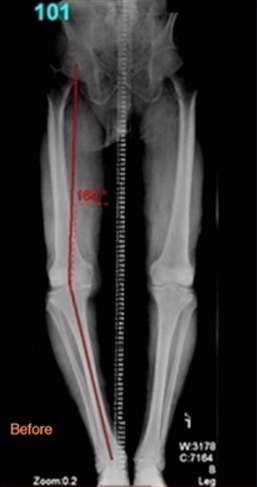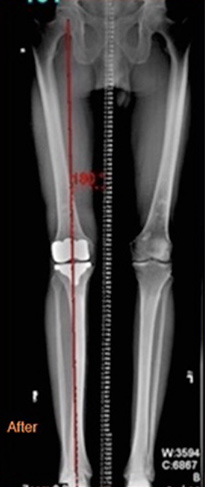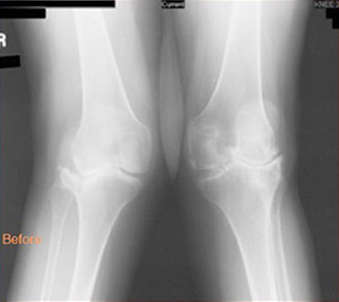Knee replacement is a surgical procedure that has been performed in the United States since the 1960s. It entails the removal of diseased or damaged joint tissue, replacing it with an artificial joint called a prosthesis. Over the years, knee replacement techniques and instrumentation have undergone countless improvements. Today, knee replacement is one of the safest and most successful types of major surgery; in well over 90% of cases it is complication-free and results in significant pain relief and restoration of mobility. Depending on the amount of joint damage and the patient’s overall health, either a partial knee replacement or a total knee replacement may be indicated.
A total knee replacement (TKR), also known as total knee arthroplasty (TKA), is a surgery that reconstructs an arthritic knee joint – replacing damaged tissue with artificial metal or plastic replacement parts called “prostheses.” These components are designed to conform to the bones meeting at the joint (femur and tibia) and facilitate joint movement, as healthy joint tissue once did.
As arthritis progresses, the inside aspect of the knee slowly wears out and this may produce a bow-legged deformity. If the arthritis is primarily on the outside aspect of the knee, with time this may produce a “knock-kneed” deformity. TKR can also help correct these deformities.
Over the past 25 years, minimally invasive surgery has revolutionized many fields of medicine. Its key characteristic is the use of specialized techniques and instrumentation that enable physicians to perform major surgery without a large incision, potentially causing less trauma to the surrounding soft tissue and accelerating recovery.
Less Invasive Surgery (LIS), Total Knee Replacement (TKR)
Unlike conventional TKR, which requires a large incision (8 to 12 inches) and significant disruption of the muscles and tendons, LIS TKR, also referred to as minimally invasive surgery (MIS) TKR, is performed through a 4 to 5 inch incision. The amount of soft tissue (muscles, tendons, nerves) that is disrupted during surgery is reduced compared to conventional techniques. Clinical studies have shown that the Midvastus surgical approach used in the MIS technique results in less pain (at both 8 days and 6 weeks post surgery), with quicker restoration of muscle control and strength. It may take several months to recover from the large incision and muscle disruption that accompanies the standard approach.
Total Knee Replacement (TKR) / Arthroplasty (TKA) Systems
Revision Knee Replacement
There are a number of reasons that a knee replacement may require a revision, each specific to the patient. Revision surgery means that part or all of a patient’s previous knee replacement must be revised. This operation varies from very minor adjustments to replacing significant amounts of bone.
Revision surgery is performed as any other surgery, addressing the damaged or failed area and replacing with the necessary components to restore pain-free, natural joint movement.
“ I ’m sorry I didn’t do something about it sooner, because there’s a world of difference.”
– Christine Ricciardi, 57,
Stryker Knee Replacement
Recipient
Read more about Revision Knee Replacement Surgery











